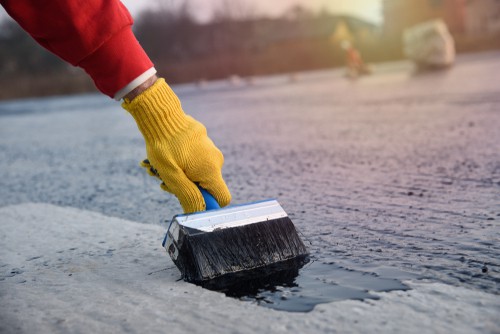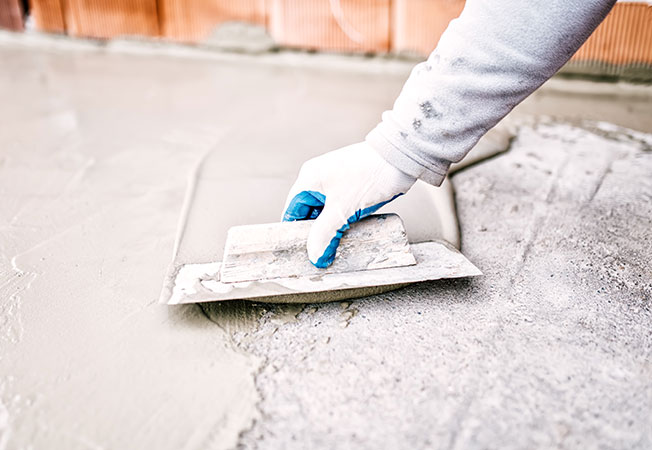Signs You Need a Drainage & waterproofing company Omaha Before It’s Too Late
Exactly How Waterproofing Works: An In-depth Check Out Techniques and Technologies
Waterproofing is necessary for protecting frameworks from moisture-related damage. It involves numerous strategies and modern technologies that produce obstacles versus water invasion. Traditional techniques, such as compressed clay, exist side-by-side with modern-day developments like liquid-applied membrane layers. Understanding the subtleties of these approaches is essential for reliable application. Nevertheless, the performance of any waterproofing remedy hinges not only on the strategies utilized however likewise on continuous maintenance and evaluation. What are the vital aspects that affect lasting efficiency?
Understanding the Basics of Waterproofing
Waterproofing is a crucial process that protects frameworks from water intrusion, which can result in considerable damages with time. This approach includes the application of different materials and techniques made to develop a barrier versus dampness. The key goal is to stop water from passing through surface areas, which can create damage, mold and mildew growth, and architectural instability.Various aspects affect the choice of waterproofing method, consisting of the type of framework, its place, and environmental problems. Comprehending the physics of water activity and the buildings of various products is crucial in picking a reliable waterproofing solution.Effective waterproofing not only safeguards buildings however likewise improves their longevity and honesty. Typically, it is integrated right into the design phase of building to assure comprehensive security. As awareness of water-related issues grows, the value of comprehending waterproofing basics becomes progressively clear to architects, builders, and residential or commercial property proprietors alike.
Typical Waterproofing Methods
Traditional waterproofing approaches have actually been made use of for centuries, relying upon reliable strategies and materials to protect structures from water damages. One of the oldest methods includes making use of clay, which, when compressed, creates an all-natural barrier against wetness. In addition, bitumen, a sticky, black material stemmed from petroleum, has been used for its water-resistant properties, commonly applied to roof coverings and foundations.Another technique includes the application of lime-based plasters, which offer a breathable layer that enables wetness to escape while protecting against water ingress. Thatch roofing, a typical approach still seen in some cultures, provides exceptional waterproofing because of its tightly loaded straw layers.Moreover, using rock and block has projected, as these products are naturally resistant to water when effectively installed. Generally, typical waterproofing techniques highlight the significance of selecting appropriate products and building methods to enhance resilience against water breach.
Modern Waterproofing Technologies
Improvements in contemporary waterproofing modern technologies have actually transformed the method frameworks are safeguarded from water damages. Ingenious techniques such as liquid-applied membrane layers and advanced sealers have enhanced the performance and flexibility of waterproofing remedies. These modern technologies permit smooth application, lowering the danger of leaks and ensuring detailed protection over intricate surfaces.Moreover, the integration of smart innovations, such as moisture sensors and automated monitoring systems, enables real-time analysis of waterproofing efficiency. This proactive technique facilitates timely maintenance and minimizes long-term repair costs.Additionally, advancements in spray-applied finishings provide quick application and outstanding attachment, adapting to numerous substratums while offering durable security. Methods like polymer-modified systems additionally improve flexibility and sturdiness, making them suitable for diverse atmospheres. Overall, contemporary waterproofing innovations not just mitigate water intrusion however also add to the long life and sustainability of frameworks, marking a considerable change in the sector.
Products Used in Waterproofing
The effectiveness of waterproofing services heavily relies on the products made use of in their application. Various materials are employed to produce obstacles against water ingress, each with special buildings fit for Full Report various atmospheres. Generally made use of materials include membranes, coverings, and sealants.Liquid-applied membranes, typically made from polyurethane or acrylic, develop a seamless barrier that adapts to complex surface areas. Sheet membranes, commonly constructed from rubber or polycarbonate, offer toughness and are suitable for larger areas. Furthermore, cementitious waterproofing materials, composed of cementitious compounds, supply superb bond and flexibility.Sealants made from silicone or polyurethane are essential for joints and seams, guaranteeing detailed security. Innovative products, such as geo-composite membrane layers, combine several functions, enhancing performance. Overall, the option of waterproofing products is important in attaining resilient and reliable water resistance, customized to certain task needs and ecological conditions.
Common Applications of Waterproofing
Waterproofing plays a vital function in various fields, guaranteeing the durability and stability of structures. Typical applications include property solutions that secure homes, industrial framework that safeguards companies, and commercial setups that need robust protection versus wetness. Understanding these applications highlights the relevance of waterproofing in maintaining both safety and functionality throughout various settings.
Residential Waterproofing Solutions
Numerous homeowners face challenges with moisture invasion, making effective household waterproofing remedies important. Various techniques exist to address this concern, including exterior and interior waterproofing systems. Interior options frequently entail the application of sealers and layers to basement walls, which assist prevent water infiltration. Outside methods usually include the installation of water drainage systems and water-proof membrane layers that draw away water away from the foundation.Additionally, property owners might take into consideration sump pumps to remove water build-up and dehumidifiers to control humidity levels. Correct grading and making use of rain gutters also play a crucial role in taking care of water flow around the home. By carrying out these approaches, homeowners can considerably lower the danger of water damage and mold and mildew development, making certain a dry and safe living atmosphere.

Commercial Framework Protection
Reliable waterproofing remedies play an important role in the defense of industrial framework. Basement waterproofing Omaha. These techniques are important for protecting buildings, vehicle parking frameworks, and bridges from water damage, which can endanger structural stability and cause expensive fixings. Common applications include the installment of membrane layers, coverings, and sealers that produce obstacles versus wetness seepage. Locations such as waterproof drywall cellars, roofs, and exterior wall surfaces are often focused on to guarantee durability and toughness. Additionally, waterproofing systems can boost energy performance by stopping water-related problems that may lead to mold and mildew growth and deterioration. By implementing robust waterproofing actions, homeowner can safeguard their investments and preserve functional efficiency, eventually adding to the overall sustainability of commercial facilities
Industrial Applications Overview
While different fields face distinct challenges, the demand for reliable waterproofing services stays a constant in commercial applications. Industries such as production, construction, and energy often experience environments where moisture exposure can threaten architectural honesty and operational performance. In manufacturing facilities, waterproofing is important for shielding equipment and products from water damage. In construction, it safeguards structures and basements against groundwater infiltration. The energy market depends on waterproofing for the security of equipment in hydroelectric plants and offshore structures. Additionally, food processing sectors utilize waterproofing to ensure health and conformity with safety and security standards. Overall, efficient waterproofing remedies are crucial for boosting toughness, security, and productivity throughout numerous industrial settings.
Upkeep and Longevity of Waterproofing Solutions
Waterproofing options are developed to provide long-term defense against dampness breach, normal maintenance is crucial to assure their efficiency and longevity. Regular assessments play a substantial function in recognizing possible concerns such as fractures, peeling off, or indicators of water damages. Addressing these troubles immediately can avoid additional wear and tear and costly repairs.Additionally, cleaning the surface of waterproof areas assists remove dust and particles that could endanger the stability of the waterproofing obstacle. It's also a good idea to reapply safety finishes or sealants as advised by suppliers to keep ideal performance. Environmental aspects, such as UV direct exposure and extreme climate condition, can influence the lifespan of waterproofing products, making routine evaluation essential
Regularly Asked Inquiries
Can Waterproofing Be Applied in Cold Weather Condition?
The concern of using waterproofing in winter elevates issues regarding adhesion and curing. Several items may not execute at their ideal in reduced temperatures, requiring mindful choice and factor to consider of from this source specific standards for reliable application.
How Much Time Does Waterproofing Commonly Last?
The duration of waterproofing effectiveness varies based upon products and environmental elements. Generally, it can last from 5 to 10 years, yet routine maintenance and evaluations are important to ensure peak performance and longevity.
Is Do It Yourself Waterproofing Effective and Safe?
The efficiency and safety and security of DIY waterproofing rely on numerous variables, consisting of worldly top quality and application method. While some people attain acceptable results, others might encounter concerns that jeopardize long-lasting defense and structural stability.
What Are the Indications of Failing Waterproofing?
Indicators of failing waterproofing include noticeable water spots, peeling paint, mold growth, stuffy odors, and wetness in wall surfaces or ceilings - Drainage & waterproofing company Omaha. These indications suggest compromised barriers, demanding prompt inspection and possible remediation to stop more damage
How Do I Pick the Right Waterproofing Contractor?
